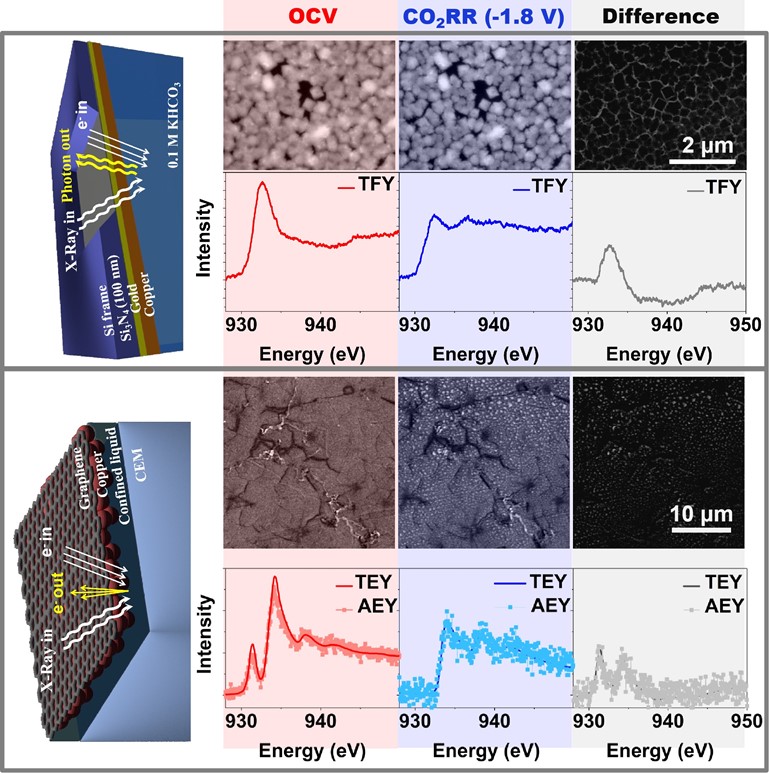Correlative in situ scanning electron microscopy / X-ray spectroscopy characterization of electrochemical interfaces
by
Maxwell Auditorium
ALBA Synchrotron
Abstract
Correlating X-ray spectroscopy with electron microscopy is a valuable method to ascribe the variation in the electronic structure with the changes observed in the material morphology during its operation. Environmental scanning electron microscopy (ESEM) and ambient pressure X-ray photoelectron spectroscopy (APXPS) are operated under similar pressure conditions. This fact enables the investigation of the same specimen with both techniques under the similar partial pressure conditions. In this talk, I will present how this approach provided an accurate and extended interpretation of the variations that an electrocatalyst undergoes in the course of the reactions. The validation of this approach will be probed with the investigation of the CO2RR [1-3] on copper oxides based electrodes comparing these results with bulk sensitive techniques based in total fluorescence yield (TFY). Typically, element specific X-ray spectroscopy was used for that purpose being technically challenging to use it in presence of liquids. This technical limitation forced the use of ex situ characterizations and bulk sensitive methods and, thereby, prompted many different interpretations of the active/stable copper oxidation state during the CO2RR. In order to provide an unambiguous description of the oxidation state of copper during the electrocatalytic reduction of CO2 to valuable hydrocarbons, we enabled the detection of surface sensitive photoelectrons using a 2D membrane (graphene) transparent to the photoelectrons [4]. A schematic comparison of the bulk and surface sensitives approaches used in this work is shown in the Figure 1. Beam effects will be also discussed.

Figure 1. Detection scheme and in situ AEY-XAS/TEY-XAS and ECSEM measurements of the CO2RR onto an in situ electrodeposited copper electrode collected under OCV and CO2RR [1].
References
- Velasco-Velez, J.J. et al, ACS Energy Letters, 5(6), 2106-2111 (2020).
- Velasco-Vélez, J.J. et al, ACS Sus. Chem. & Eng. 7, 1485-1492 (2018).
- Velasco-Vélez, J.J. et al, ACS Catalysis, 10(19), 11510-11518 (2020).
- Velasco-Vélez, J.J. Faraday Discussions 236, 103-125 (2022).
InCAEM Project


